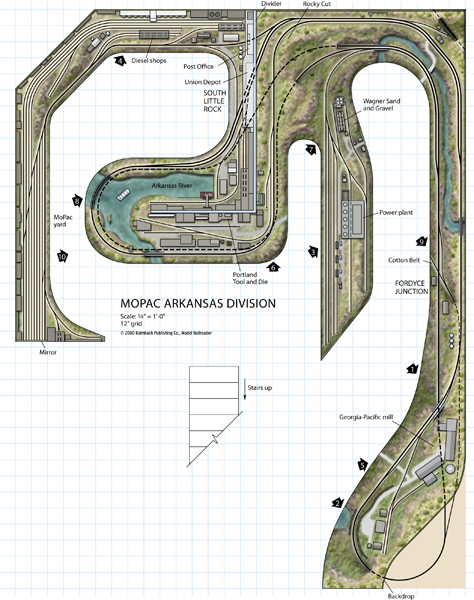
Track plan at a glance Name: MoPac Arkansas Division Scale: HO (1:87) Size: 28 x 36 feet Prototype: Missouri Pacific Period: 1980s Style: around the walls Mainline run: 168 feet Minimum radius: 28″ Minimum turnout: no. 4 in yards, no. 6 on main Maximum grade: 1.5 percent Originally appeared in the June 2000 issue of […]
Read More…
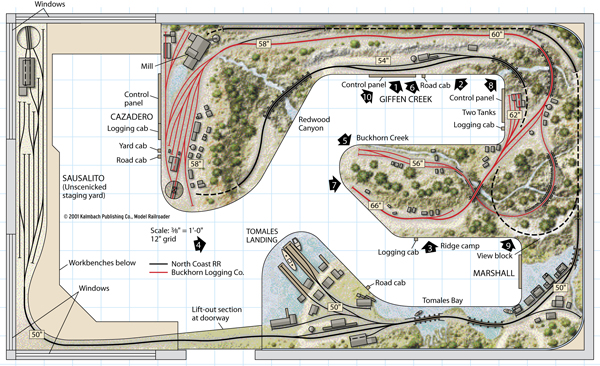
Track plan at a glance Name: North Coast RR, Buckhorn Logging Co. Scale: HOn3 (1:87) Size: 11′-6″ x 20′-0″ Prototype: North Pacific Coast RR Period: 1904 Style: walk-in shelf with peninsula Mainline run: 131 feet Minimum radius: 22″ (18″ logging) Minimum turnout: no. 6 (no. 4 on logging line) Maximum grade: 3.5 percent (8.5 percent […]
Read More…
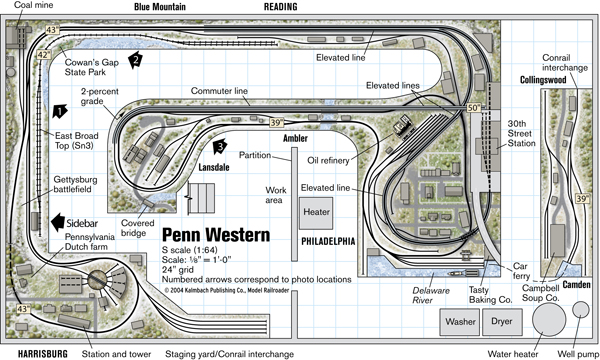
Track plan at a glanceName: Penn Western RRScale: S (1:64)Size: 29 x 45 feetPrototype: free-lancedEra: 1960s to presentStyle: walkaroundMainline run: 160 feetMinimum radius: 36″Minimum turnout: no. 6Maximum grade: 2.4 percentOriginally appeared in the October 2004 issue of Model Railroader.Click on the link to download a PDF of this track plan […]
Read More…
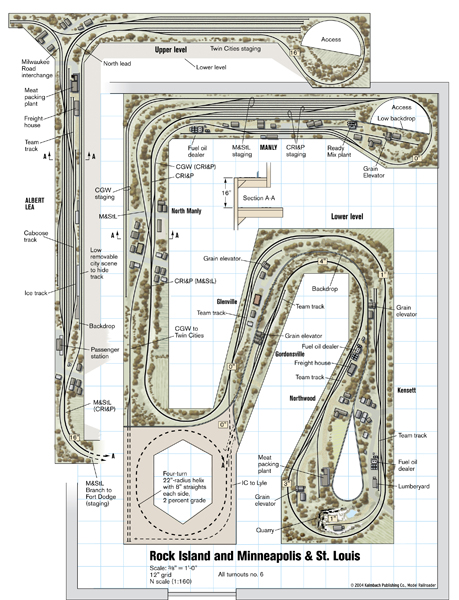
Track plan at a glance Name: Rock Island and Minneapolis & St. Louis Scale: N (1:160) Minimum turnout: no. 6 Originally appeared in the November 2004 issue of Model Railroader. Click on the link to download a PDF of this track plan […]
Read More…
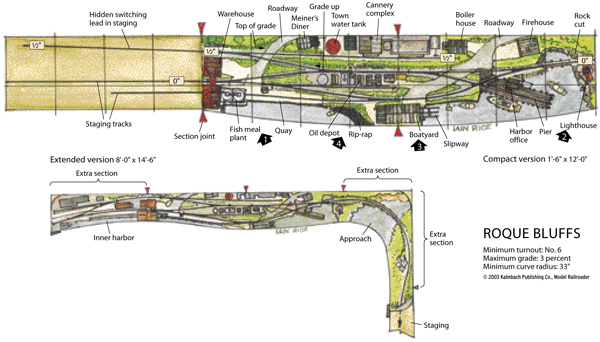
Track plan at a glance Name: Roque Bluffs Minimum radius: 33″ Minimum turnout: no. 6 Maximum grade: 3 percent Originally appeared in the October 2003 issue of Model Railroader. Click on the link to download a PDF of this track plan […]
Read More…
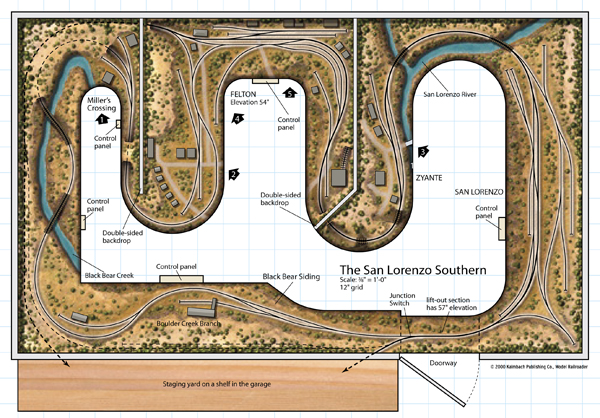
Track plan at a glance Name: San Lorenzo Southern Scale: HOn3 Size: 13 x 22 feet Prototype: free-lanced narrow gauge Period: 1930-1945 Style: around the walls, walk-in Minimum radius: 24″ main line, 18″ on branch line Minimum turnout: no. 6 Maximum grade: 2 percent main line, 3 percent on branch line Originally appeared in the […]
Read More…
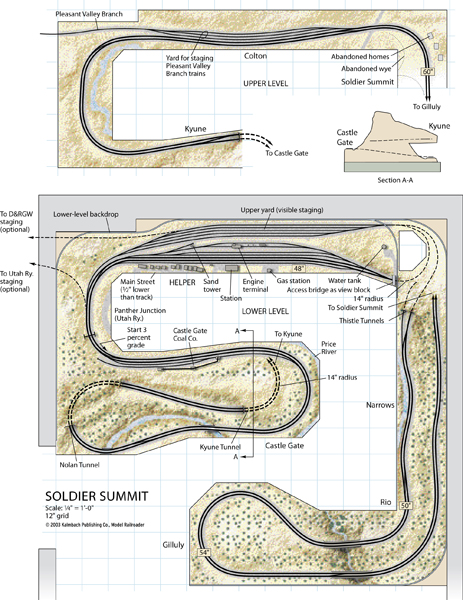
Track plan at a glance Name: Soldier Summit Scale: N (1:160) Size: 14 x 15 feet Theme: Denver & Rio Grande Western Period: 1988 Mainline run: 100 feet Minimum radius: 14″ Minimum turnout: no. 6 Maximum grade: 3 percent Maximum grade separation: 11″ Originally appeared in the November 2003 issue of Model Railroader. Also appeared […]
Read More…
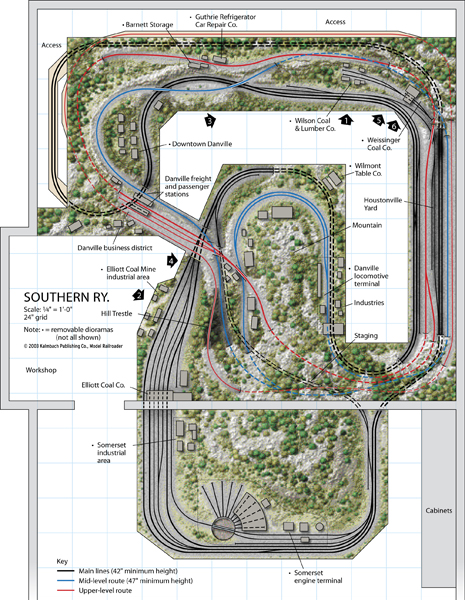
Track plan at a glance Name: Southern Ry. Scale: HO (1:87.1) Size: 24 x 30 feet Prototype: Southern Ry. Period: 1945 through early 1950s Style: walk-in with one duck-under Mainline run: 425 feet Minimum radius: 30″ Minimum turnout: no. 8 with some no. 6 Maximum grade: 1.5 percent Originally appeared in the August 2003 issue […]
Read More…
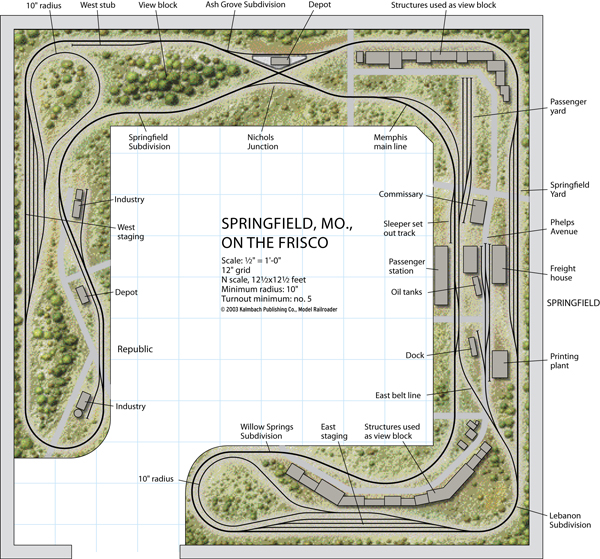
Track plan at a glance Name: Springfield, Mo., on the Frisco Scale: N Size: 12 1/2 x 12 1/2 feet Minimum radius: 10″ Minimum turnout: no. 5 Originally appeared in the December 2003 issue of Model Railroader. Also appeared in 102 Realistic Track Plans. Click on the link to download a PDF of this track […]
Read More…
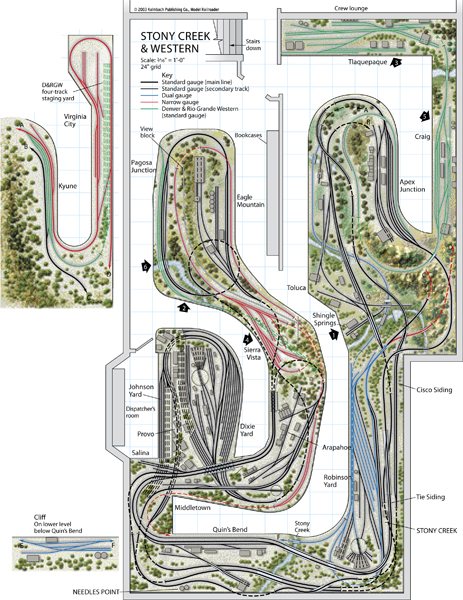
Track plan at a glance Name: Stony Creek & Western Scale: HO (1:87) Size: 29 x 51 feet Theme: Western bridge line Era: mid-1950s Style: panoramic, walk-in Minimum radius: 28″ HO, 22″ HOn3 Minimum turnout: no. 6 Maximum grade: 2.5 percent Originally appeared in the April 2003 issue of Model Railroader. Click on the link […]
Read More…
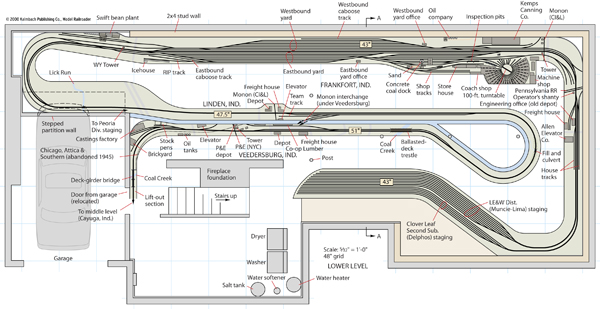
Track plan at a glance Name: Nickel Plate Third Subdivision Originally appeared in the September 2000 issue of Model Railroader. Click here to download a PDF of this track plan […]
Read More…
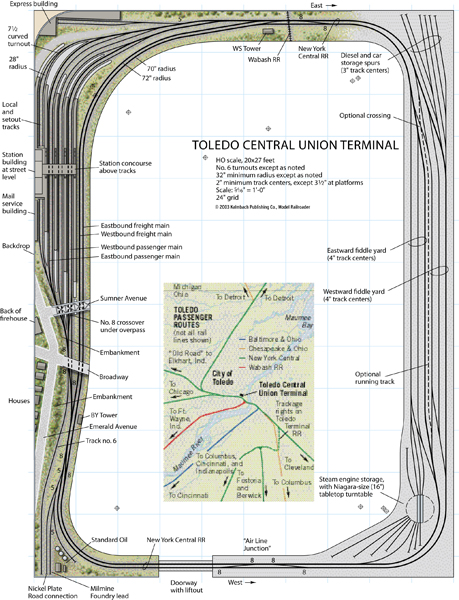
Track plan at a glance Name: Toledo Central Union Terminal Scale: HO Size: 20 x 27 feet Minimum radius: 32″ Minimum turnout: no. 6 Originally appeared in the February 2003 issue of Model Railroader. Click here to download a PDF of this track plan […]
Read More…












